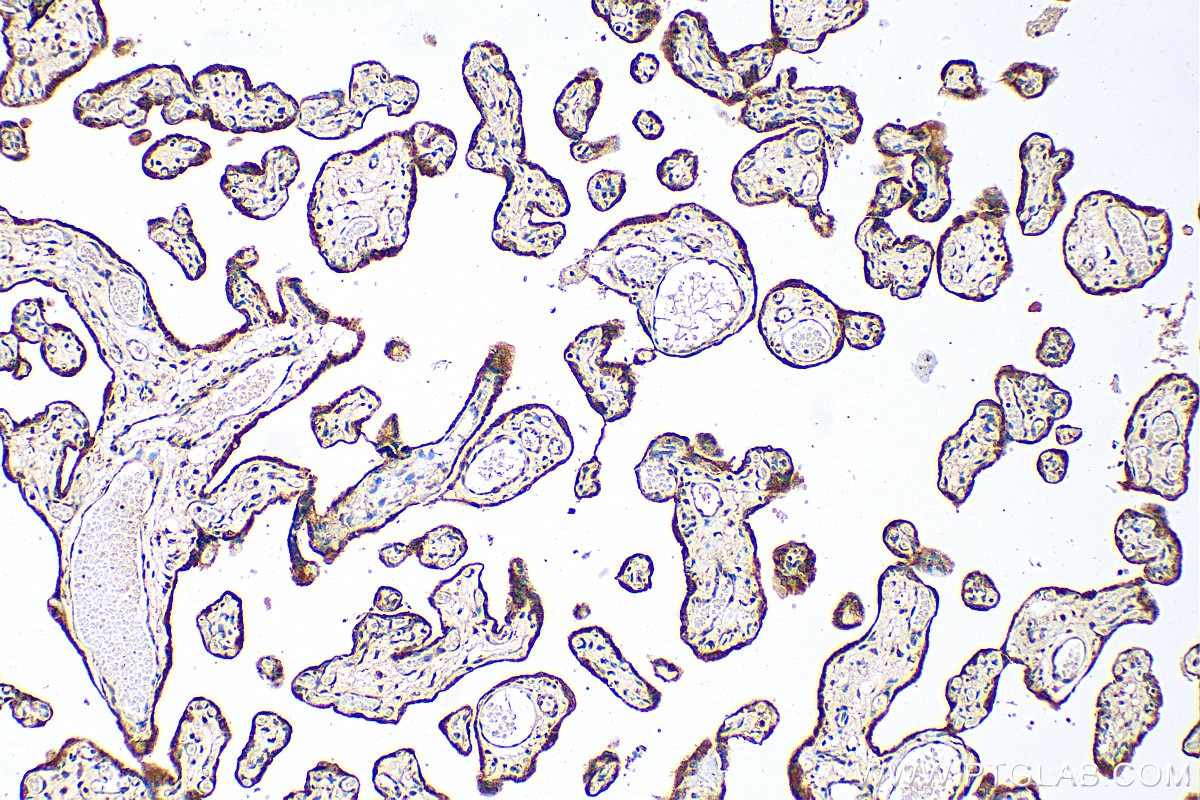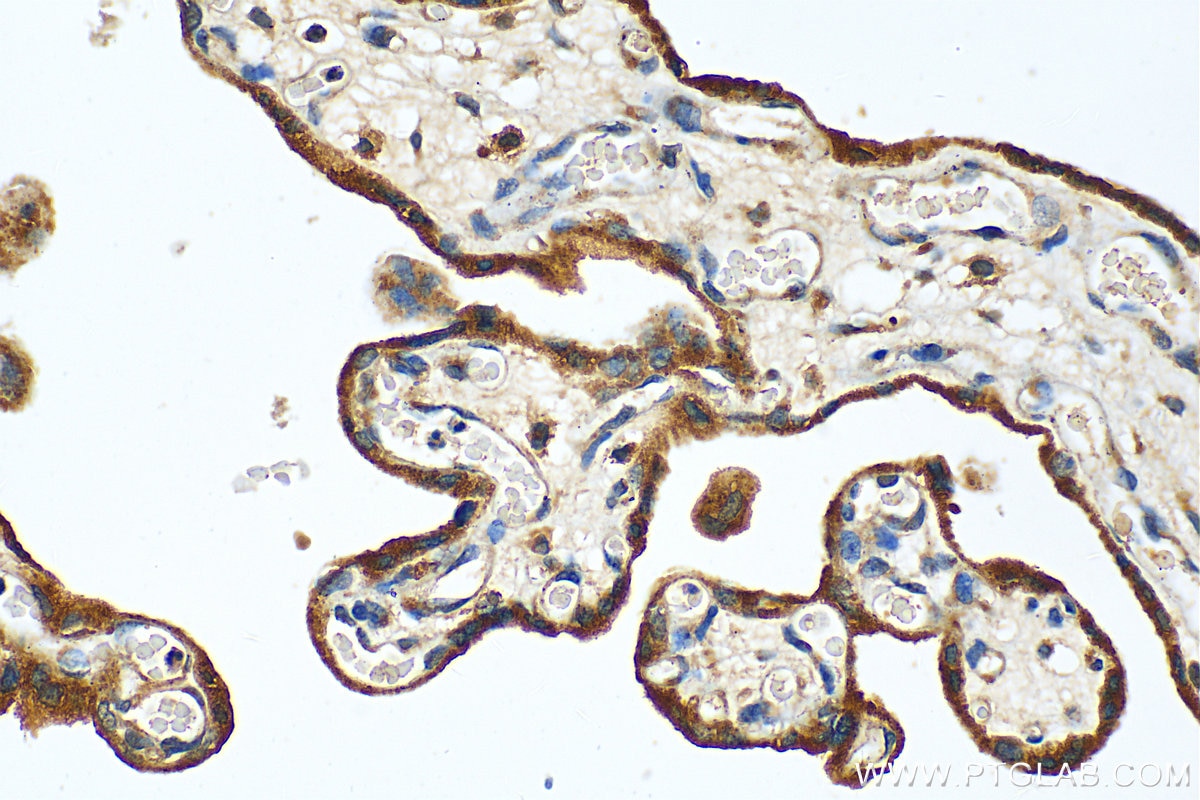Tested Applications
| Positive WB detected in | HUVEC cells |
| Positive IHC detected in | human placenta tissue Note: suggested antigen retrieval with TE buffer pH 9.0; (*) Alternatively, antigen retrieval may be performed with citrate buffer pH 6.0 |
Recommended dilution
| Application | Dilution |
|---|---|
| Western Blot (WB) | WB : 1:500-1:2000 |
| Immunohistochemistry (IHC) | IHC : 1:50-1:500 |
| It is recommended that this reagent should be titrated in each testing system to obtain optimal results. | |
| Sample-dependent, Check data in validation data gallery. | |
Product Information
17607-1-AP targets SLC39A9 in WB, IHC, ELISA applications and shows reactivity with human samples.
| Tested Reactivity | human |
| Host / Isotype | Rabbit / IgG |
| Class | Polyclonal |
| Type | Antibody |
| Immunogen | SLC39A9 fusion protein Ag11752 Predict reactive species |
| Full Name | solute carrier family 39 (zinc transporter), member 9 |
| Calculated Molecular Weight | 307 aa, 32 kDa |
| Observed Molecular Weight | 25 kDa |
| GenBank Accession Number | BC047682 |
| Gene Symbol | SLC39A9 |
| Gene ID (NCBI) | 55334 |
| RRID | AB_3085528 |
| Conjugate | Unconjugated |
| Form | Liquid |
| Purification Method | Antigen affinity purification |
| UNIPROT ID | Q9NUM3 |
| Storage Buffer | PBS with 0.02% sodium azide and 50% glycerol , pH 7.3 |
| Storage Conditions | Store at -20°C. Stable for one year after shipment. Aliquoting is unnecessary for -20oC storage. 20ul sizes contain 0.1% BSA. |
Background Information
Zinc transporter ZIP9 subfamily (SLC39A9) encodes a protein with characteristics of a membrane androgen receptor (mAR). Human ZIP9 is a 307-amino acid protein, which has eight putative transmembrane domains. ZIP9 has also been identified and characterized as a resident protein in the Golgi in DT40 and HeLa cell lines (PMID: 19420709, 23505453). ZIP9 may be present on the cell surface, as well as nuclear and mitochondrial membranes, in human breast and prostate cancer cell lines, where it mediates testosterone induction of apoptosis (PMID: 29952128). knockout of ZIP9 would lead to zinc accumulation in the secretory pathway, which could influence the general ion homeostasis and in turn the glycosylation outcome (PMID: 36648436).
Protocols
| Product Specific Protocols | |
|---|---|
| WB protocol for SLC39A9 antibody 17607-1-AP | Download protocol |
| IHC protocol for SLC39A9 antibody 17607-1-AP | Download protocol |
| Standard Protocols | |
|---|---|
| Click here to view our Standard Protocols |







